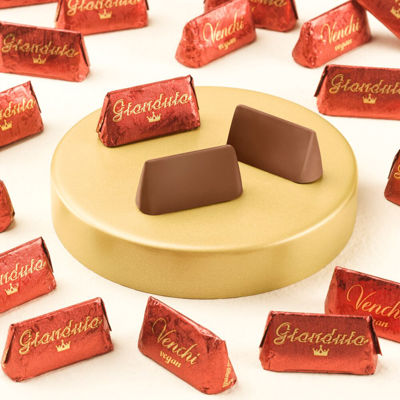
Cocoa Beans Processing: From Beans to Bars
Cocoa and chocolate are enjoyed by millions of people around the world, but not everyone knows where they come from. Cocoa was first grown by ancient South American civilisations, including the Aztecs and Mayans.
Cocoa: history and insights
Bitter cocoa was used in a spice-based drink shared during religious ceremonies. Cocoa beans were so significant to local cultures that they were used as a form of currency in trade, given to warriors as a reward after battles, and served at royal banquets. When the Spanish conquistadors arrived in the New World, they too discovered the value of the local cocoa crop and imported it to Europe. Hundreds of years later, cocoa processing has evolved to create the chocolate we all know and love today!
Cocoa beans processing: step by step
Here are all the steps involved in transforming the cocoa beans into chocolate. This is where Venchi works its magic.
1. HARVESTING THE COCOA PODS: once ripe, the fruits are harvested using a machete. This step requires professionalism and dedication.
2. OPENING THE PODS AND EXTRACTING THE BEANS: the pods are opened on the spot to extract the beans. This is a very delicate step because one wrong incision can compromise the entire pod.
3. FERMENTATION: at this stage, the cocoa beans, mixed with the pulp, must be fermented for around 5 days so that the sugars in the pulp are broken down by enzymes. This is done to give the chocolate its characteristic flavour. To speed up the fermentation process, the beans are collected and heaped in large containers and covered with banana leaves. By doing so, fermentation begins straight away, and the temperature rises to around 50°C.
4. DRYING: the beans are then dried in the sun to stop fermentation and to stabilise them. This takes between two and seven days. The beans should be stirred so that they’re uniformly dry. Humidity drops from 60% to 7.5% to prevent mould and micro-organisms from attacking and to evaporate the acid formed during fermentation.
5. ROASTING: the first industrial stage is roasting. After they’re cleaned, the beans are roasted at 110/120 degrees for 15-20 minutes. This is a very delicate stage as it enhances, shapes and enriches the flavour of the cocoa. If overdone, you risk losing all the subtle hints and secondary aromas.
6. COOLING AND SEPARATING: after cooling, the beans are put into a grinding machine to separate the cocoa from the skin and form granules (nibs). Rather than being thrown away, these are kept as they can be used to make chocolate, crunchy snacks and treats with toasted notes, such as our 75% Nibs maxi bar.
7. GRINDING AND REFINING: the granules are ground in special mills to form cocoa liquor. The next stage is refining, where rollers are used to reduce larger granules into particles.
8. CONCHING: at this stage, the various raw materials are mixed together, depending on the end product you want. Cocoa butter, sugar, milk powder, hazelnut paste or whatever else are added to the cocoa mass. The ingredients are then poured into a large machine, known as a 'conch', and heated before being mixed together to form a smooth, even mixture. This stage is key to giving the chocolate its melting, velvety quality.
9. TEMPERING: at this stage, the temperature is raised then decreased. This change makes the cocoa butter crystallise into a compact form, creating a smooth, even and shiny surface.
10. MOULDING: The tempered chocolate is poured into moulds that are then placed onto a continuously vibrating belt to eliminate air bubbles by causing the chocolate to stick to the sides.
11. COOLING AND PACKAGING: The moulds then go through the cooling tunnel, at a temperature of around 6°C, where the chocolate solidifies, making it easy to extract and package.
Once fully cooled, it's solidified into various striking forms and shapes, including slabs, bars, individual chocolates, pralines and Easter Eggs!

